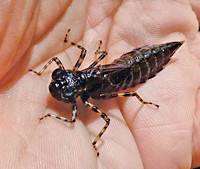Advertisement
Grab your lab coat. Let's get started
Welcome!
Welcome!
Create an account below to get 6 C&EN articles per month, receive newsletters and more - all free.
It seems this is your first time logging in online. Please enter the following information to continue.
As an ACS member you automatically get access to this site. All we need is few more details to create your reading experience.
Not you? Sign in with a different account.
Not you? Sign in with a different account.
ERROR 1
ERROR 1
ERROR 2
ERROR 2
ERROR 2
ERROR 2
ERROR 2
Password and Confirm password must match.
If you have an ACS member number, please enter it here so we can link this account to your membership. (optional)
ERROR 2
ACS values your privacy. By submitting your information, you are gaining access to C&EN and subscribing to our weekly newsletter. We use the information you provide to make your reading experience better, and we will never sell your data to third party members.
Environment
Assessing Birds’ Mercury Risks More Complicated Than Previously Thought
Ecology: Common method to monitor mercury levels in wetland birds doesn’t accurately represent risk from the contaminant
by Erika Gebel
May 16, 2013

Mercury can disrupt reproduction for many bird species, preventing their eggs from hatching and increasing mortality in their chicks. Ecologists monitor levels of the toxic metal in birds by analyzing the animals’ blood and feathers. This method, however, might not provide an accurate picture of the risk posed by mercury to bird populations, according to a new study. Researchers found that mercury content of avian blood and feathers doesn’t match that found in eggs, which they say is most indicative of reproductive harm (Environ. Sci. Technol. 2013, DOI: 10.1021/es400910x). The results suggest that scientists shouldn’t assume the tissues can be used interchangeably for mercury risk assessment, the researchers say.

Birds living in wetlands suffer in particular from mercury contamination because bacteria in the water convert inorganic mercury into methylmercury, which animals absorb more readily, says C. Alex Hartman of the U.S. Geological Survey in Dixon, Calif. “The fish take it up, and then the birds that eat the fish take it up.” But even birds that don’t eat fish aren’t safe. Over the past few years, scientists have found evidence that insect-eating songbirds in wetland areas also accumulate and are harmed by mercury (Auk 2011, DOI: 10.1525/auk.2011.11106).
To measure mercury levels in bird tissues, ecologists typically sample blood or feathers because they’re easy to collect, and the method doesn’t harm the birds, Hartman says. Measuring mercury concentrations in eggs is a more direct way to assess reproductive risk, he says, but the process destroys the eggs. Because scientists assumed that mercury levels in these tissues—blood, feathers, and eggs—are correlated within a given geographical area, they usually don’t go after eggs. But Hartman wanted to test that assumption.
Hartman and his colleagues selected the marsh wren (Cistothorus palustris), an insect-eater that lives in the wetlands of Great Salt Lake in Utah, because previous studies showed that these birds may be particularly vulnerable to mercury contamination. At 12 sites over a 116-square-mile area, the researchers set up 39-foot-long nets made of a fine mesh and lured birds to the nets by playing marsh wren songs on a portable stereo. They captured 45 wrens, collected blood and feathers, and then released the birds. The researchers also collected 40 eggs from nests near the capture sites.
Back in the lab, the researchers measured the mercury content of the samples with atomic absorption spectroscopy. They found no significant correlation between mercury concentrations in the collected blood, feathers, and eggs. To try to ensure they were comparing the same birds, the scientists next analyzed data from samples collected over small geographical areas that represent the home range of a wren. Still, the statistical analysis showed no meaningful correlation between the tissue types. These results suggest that “you can’t make an assumption that if you collect blood, you can estimate the egg concentration,” Hartman says.
Scientists could use this information to develop a gold standard for measuring the impact of mercury on bird populations, says David C. Evers, a conservation biologist and chief scientist at the Biodiversity Research Institute, in Gorham, Maine. Hartman now plans to see if the differences he observed in marsh wren tissues extend to fish-eating birds and to birds in other environments.





Join the conversation
Contact the reporter
Submit a Letter to the Editor for publication
Engage with us on Twitter